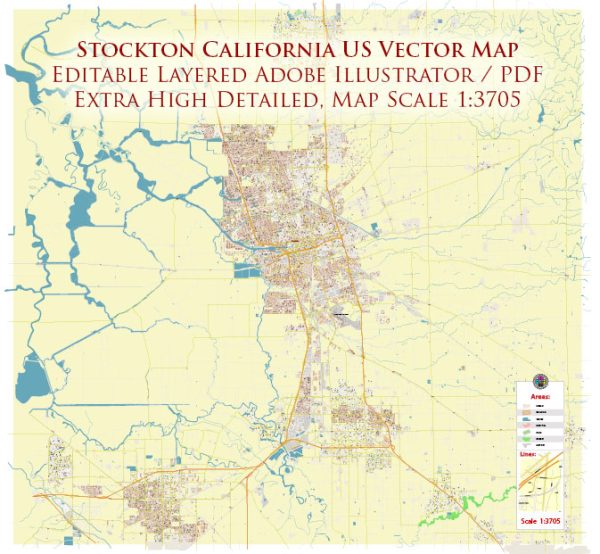Stockton, California, is a city located in the Central Valley of California, in the United States. It has a rich history and has experienced significant changes in urban development over the years. Here is a description of Stockton’s urban development:
- Early Settlement: Stockton was founded in 1849 during the California Gold Rush and quickly became a major transportation hub due to its strategic location on the San Joaquin River. The city was initially a rough-and-tumble town, but it soon evolved into a center for commerce and agriculture.
- Agricultural Hub: Stockton’s urban development has been closely tied to its role as an agricultural hub. The city and its surrounding region have fertile soil, making it ideal for farming. As a result, Stockton became a center for agriculture, including the cultivation of crops like asparagus, tomatoes, and cherries, as well as the shipping of goods through its port.
- Transportation: Stockton’s growth was also heavily influenced by transportation. The city is strategically located at the intersection of major highways and is served by an Amtrak station and a regional airport. This has contributed to its development as a transportation and distribution hub.
- Diverse Economy: Stockton’s urban development has diversified over the years. While agriculture and transportation remain vital, the city has seen growth in other sectors such as healthcare, education, and manufacturing. Healthcare facilities like St. Joseph’s Medical Center and educational institutions like the University of the Pacific are significant contributors to the local economy.
- Waterfront Revitalization: Stockton has been working to revitalize its waterfront along the San Joaquin River. This project, known as the Stockton Waterfront Master Plan, aims to transform the waterfront area into a vibrant, mixed-use development with parks, residential spaces, and commercial opportunities. This initiative seeks to enhance the city’s quality of life and boost economic growth.
- Housing Development: Stockton has seen housing development across various neighborhoods to accommodate its growing population. From historic homes in the Magnolia Historic District to newer suburban developments, there is a range of housing options in the city.
- Challenges: Stockton has faced its share of urban challenges, including economic difficulties, crime, and bankruptcy in recent years. However, the city has been working to address these issues and revitalize various neighborhoods through community engagement and urban planning.
- Sustainability: Like many cities, Stockton has been increasingly focused on sustainability and environmental considerations in its urban development. Efforts to promote clean energy, reduce emissions, and implement green infrastructure have become more prominent in the city’s planning.
Stockton, California’s urban development is a dynamic process that reflects its historical significance as an agricultural and transportation hub while adapting to modern challenges and opportunities. The city continues to evolve as it strives to improve the quality of life for its residents and enhance its economic prospects.


 Author: Kirill Shrayber, Ph.D.
Author: Kirill Shrayber, Ph.D.